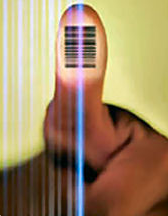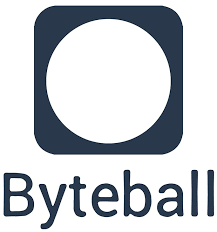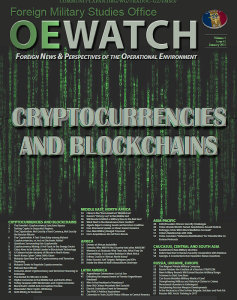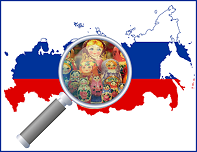[Editor’s Note: The U.S. Army Training and Doctrine Command (TRADOC) G-2’s Mad Scientist Initiative tracks a number of emergent disruptive technologies that have the potential to impact the Future Operational Environment. We have already seen a number of these technologies being applied by regimes as a means for social  control and manipulation — China’s use of facial recognition cameras to surveil the Uighur population in Xinjiang province, and social credit scores to control the general population across width and breadth of the Middle Kingdom (beginning in 2020) are but two examples. Mad Scientist Laboratory is pleased to publish guest blogger Dr. Mica Hall‘s post addressing the potential societal, economic, and political disruptions posed by Russia’s embrace of cryptocurrency technology. (Note: Some of the embedded links in this post are best accessed using non-DoD networks.)]
control and manipulation — China’s use of facial recognition cameras to surveil the Uighur population in Xinjiang province, and social credit scores to control the general population across width and breadth of the Middle Kingdom (beginning in 2020) are but two examples. Mad Scientist Laboratory is pleased to publish guest blogger Dr. Mica Hall‘s post addressing the potential societal, economic, and political disruptions posed by Russia’s embrace of cryptocurrency technology. (Note: Some of the embedded links in this post are best accessed using non-DoD networks.)]
 Cryptocurrencies and Distributed Ledger Technology (DLT), including blockchain, have clear implications for the Future Operational Environment — affecting domestic infrastructure, the race for information sovereignty, domestic politics, and geopolitics. What may appear to be a purely economic factor is being used as a lever to affect state access to citizens’ personal information, control of information flows, and foreign relations both at a regional and global level.
Cryptocurrencies and Distributed Ledger Technology (DLT), including blockchain, have clear implications for the Future Operational Environment — affecting domestic infrastructure, the race for information sovereignty, domestic politics, and geopolitics. What may appear to be a purely economic factor is being used as a lever to affect state access to citizens’ personal information, control of information flows, and foreign relations both at a regional and global level.
 Cryptocurrencies, untethered from traditional economic paradigms, can be used for illicit transactions in support of crime and terrorism, proliferation, countering sanctions, and potential existential economic threats. If money is an idea based on trust, understanding it is an information-related capability. A country’s degree of digital sovereignty can have both foreign policy and military consequences, so the race to control information is a significant effort in hybrid warfare.
Cryptocurrencies, untethered from traditional economic paradigms, can be used for illicit transactions in support of crime and terrorism, proliferation, countering sanctions, and potential existential economic threats. If money is an idea based on trust, understanding it is an information-related capability. A country’s degree of digital sovereignty can have both foreign policy and military consequences, so the race to control information is a significant effort in hybrid warfare.
Cryptocurrency in its “traditional” definition has three primary characteristics:
1) It is decentralized (i.e., the information is not held by one organization, such as a nation’s central bank or the Federal Reserve) and decisions to approve a payment and move “funds” from one account to another are made by multiple users, commonly known as “miners”;
2) Ownership of funds is anonymous – the system itself often does not require any identification for membership and a user’s identity is not identified in any way in the transfers (although identities could potentially be traced via IP addresses, credit card numbers, and e-mail addresses used); and
3) All transactions are transparent and immutable (unless overwritten by a longer chain) – once completed, everyone can see the accounts involved in the transaction, the amount, and when it was transferred. Once transferred, there is (typically) no way to block the transfer, even if one party claims that the other did not provide the promised goods or services, or they were not of the commensurate quality, and there is no recourse regarding the seller/provider.
President Putin has both scared the public by talking about the criminal potential evidenced in cryptocurrencies, while simultaneously promoting the Digital Economy.  He has announced plans to launch the cryptoruble as part of realizing his Digital Economy platform. If Putin’s administration implements a DLT-based national cryptocurrency and legislates that all Russian citizens convert to the new system by allowing only one way to participate in the economy (e.g., by removing paper rubles from circulation), they will have an open ledger to every citizen’s finances. The state could also use it to exclude state-identified dissidents completely from the economy. 1
He has announced plans to launch the cryptoruble as part of realizing his Digital Economy platform. If Putin’s administration implements a DLT-based national cryptocurrency and legislates that all Russian citizens convert to the new system by allowing only one way to participate in the economy (e.g., by removing paper rubles from circulation), they will have an open ledger to every citizen’s finances. The state could also use it to exclude state-identified dissidents completely from the economy. 1
In a potential nightmare scenario, the elimination of the paper ruble would eliminate any ability for individuals to engage in anonymous transactions or even remain anonymous at all:
“Cash is the most important factor in people’s freedom and independence. If we turn away from cash voluntarily… we’ll become bio-objects who are that much more manipulable. And if you even squeak, you’ll become a pariah in the best case scenario, and homeless in the worst case scenario, with no way to support yourself.”2
It begs the question whether the current freedom of speech netizens currently enjoy might also disappear, once each individual is ultimately trackable.
 The beauty of the cryptoruble, from the administration’s standpoint, is that it “bring(s) under its control a technology in complete anarchy,”3
The beauty of the cryptoruble, from the administration’s standpoint, is that it “bring(s) under its control a technology in complete anarchy,”3
and provides the government access to Russian citizens’ information while doing so in the name of protecting citizens from criminals who use cash rubles to hide crimes, such as money laundering and terrorism.4
This technology would allow the Russian government to have complete control over currency inventory and flow via visibility over all money operations. “It would be dumb to think that the authorities would pass up these fantastic opportunities.”5 As Polčák and Svantesson suggest,
“Data not only represent an integral part of the identity of a person, they also represent, together with other essentials, an integral part of the identity of a state. Keeping control over such data is equally important for both an individual and for a state to retain their sovereign existence.”6
 The cryptoruble is the ultimate foil to any desire by individual citizens to protect their privacy and anonymity, providing for “protection” by the state for the greater good for all its citizens. In this way, President Putin’s Digital Economy project, a political platform, deftly works towards full digital sovereignty and information sovereignty on the foundation of technological sovereignty and in the name of national security.
The cryptoruble is the ultimate foil to any desire by individual citizens to protect their privacy and anonymity, providing for “protection” by the state for the greater good for all its citizens. In this way, President Putin’s Digital Economy project, a political platform, deftly works towards full digital sovereignty and information sovereignty on the foundation of technological sovereignty and in the name of national security.
The opinions expressed in the Russian-language media regarding what the future the cryptoruble may portend run the gamut, with both supporters and dissenters agreeing on the significance of this level of government control of the economy. Cryptoruble skeptics predict a dystopian future, warning of this transparent ledger system, “The President will know everything about everyone in the country – who paid who and how much.”7 In a way strangely similar to the current method of issuing social security numbers in the United States, @dimon777 suggests, “Newborns could be assigned cryptowallets at birth.”8
 A state-issued blockchain currency could also bring order – via total control – to all government documentation processes. DLT has already been proposed as a system for recording real estate transactions, the argument being they would be processed faster than paper documentation and are a matter of public record. While banks may process credit requests faster, a centralized information hub may actually provide all the information the state knows about the applicant at the touch of a button, via an “interagency electronic cooperation system,” with data on marriages and divorces, births, and deaths; “all the data about an applicant’s family situation;” data regarding the Pension Fund of the RF; “about their place of work and payments made into the fund;” and about their immigration status, in addition to their actual credit history.9
A state-issued blockchain currency could also bring order – via total control – to all government documentation processes. DLT has already been proposed as a system for recording real estate transactions, the argument being they would be processed faster than paper documentation and are a matter of public record. While banks may process credit requests faster, a centralized information hub may actually provide all the information the state knows about the applicant at the touch of a button, via an “interagency electronic cooperation system,” with data on marriages and divorces, births, and deaths; “all the data about an applicant’s family situation;” data regarding the Pension Fund of the RF; “about their place of work and payments made into the fund;” and about their immigration status, in addition to their actual credit history.9
 Once blockchain-based processes become the norm for doing business in Russia, several sources suggest the next step could be using biometrics to verify identity. Perhaps with the one added benefit of never having to remember a password again, the Russian banking system could soon move to a system of virtual identity verification via biometrics.10
Once blockchain-based processes become the norm for doing business in Russia, several sources suggest the next step could be using biometrics to verify identity. Perhaps with the one added benefit of never having to remember a password again, the Russian banking system could soon move to a system of virtual identity verification via biometrics.10
In June 2016, President Putin announced plans to establish a “federal information system for biometric registration that would store data about ‘persons involved in terrorism and extremism'” and since then, the Russian authorities have been “increasingly active in their collection and use of various biometric data (fingerprints, DNA samples, photographs, etc.).”11
The justification provided for this data collection has been national security, yet the scope is broad, including cases covered by legislation on “defense, security, combatting terrorism, transport safety, anti-corruption, investigative activity, civil service, criminal enforcement legislation, requirements for entry and exit from the country, and citizenship,”12 so expanding the system even further is plausible.
 One cryptocurrency that could be controlled if needed is Byteball, so called for the shape of its chains. Like “traditional” cryptocurrency payments, Byteball transactions take place cryptowallet to cryptowallet, yet Byteball has a parallel, non-transparent system called “blackbytes” whose transactions are both visible in a public ledger and untraceable. These coins could be used when transactions “need to be concealed, for example, in funding secret programs.”13 These are the only conditions in which Russia will embark on a cryptocurrency épopée – if it is fully controlled by the state.
One cryptocurrency that could be controlled if needed is Byteball, so called for the shape of its chains. Like “traditional” cryptocurrency payments, Byteball transactions take place cryptowallet to cryptowallet, yet Byteball has a parallel, non-transparent system called “blackbytes” whose transactions are both visible in a public ledger and untraceable. These coins could be used when transactions “need to be concealed, for example, in funding secret programs.”13 These are the only conditions in which Russia will embark on a cryptocurrency épopée – if it is fully controlled by the state.
As Telley suggests, “Cryptocurrencies must now be counted as an impactful part of the operational environment.”14 In the case of the cryptoruble, it is the nexus of the political, economic, social, information, and infrastructure effects that may manifest the greatest danger or the greatest change. While the Digital Economy program may resemble a simple slide backwards towards a centrally controlled economy, a DLT-based currency issued by the Russian Central Bank would allow the administration to wield a significant level of access to personal information, in addition to economic control.
 For a deeper dive into this topic, go to the TRADOC G-2’s Foreign Military Studies Office (FMSO) OEWatch page and download Volume 8, Issue #1, January 2018, featuring a host of articles on Cryptocurrencies and Blockchains and their impact in nations around the world.
For a deeper dive into this topic, go to the TRADOC G-2’s Foreign Military Studies Office (FMSO) OEWatch page and download Volume 8, Issue #1, January 2018, featuring a host of articles on Cryptocurrencies and Blockchains and their impact in nations around the world.
Also see the following guest blog posts describing addressing other potential disruptors that may affect the Future Operational Environment:
- Virtual Nations: An Emerging Supranational Cyber Trend, by Ms. Marie Murphy.
- Alternet: What Happens When the Internet is No Longer Trusted?, by Lt Col Jennifer “JJ” Snow.
Dr. Mica Hall is a Russian linguist and holds an MA and PhD in Slavic Linguistics and an MPA.
The views expressed in this article are those of the author and do not reflect the official policy or position of the Department of the Army, DoD, or the U.S. Government.
1 nalivaiko43 (2017), It’s Going to End up Being an Electronic Concentration Camp, golos.io, https://golos.io/ru–konczlagerx/@nalivaiko/elektronnyi-konclager-nacionalnykh-kriptovalyut, 16 October 2017.
2 nalivaiko43, It’s Going to End up.
3 Cryptoruble: What is it, Can I Buy it, When Are They Issuing it, and How Can I Use it to Make Money? kripto-rubl.ru, https://kripto-rubl.ru, 24 October 2017.
4 Fyodor Naumov, 2017, Digital Sovereignty: Why the Government Needs the Cryptoruble, Forbes.ru, http://www.forbes.ru/finansy-i-investicii/352381-cifrovoy-suvernitet-zachem-pravitelstvu-ponadobitsya-kriptorubl, 3 November 2017.
5 mr-kryply59, 2017, CryplyNews. Cryptoruble and Cryptoyuan, Two Bitcoin Killers, golos.io, https://golos.io/ru–bitkoin/@mr-kryply/cryplynews-kriptorubl-i-kriptoyuan-srazu-dva-ubiicy-bitkoina, 16 October 2017.
6 Radim Polčák and Dan Jerker Svantesson, 2017, Information Sovereignty: Data Privacy, Sovereign Powers and the Rule of Law, Northampton, MA, Edward Edgar Publishing.
7 @dimon777, 2017, Phantasmagoria about the Cryptoruble, golos.io, https://golos.io/ru–bitkoin/@dimon777/fantasmagoriya-o-kriptoruble, 25 August 2017.
8 @dimon777, Phantasmagoria about the Cryptoruble.
9 Nikolay Alekseenko, 2017, Blockchain without The Middleman: What Developments Does the Digital Economy Hold? realty.rbc.ru, https://realty.rbc.ru/news/59788fab9a7947d94ee1ddcb, 26 July 2017.
10 Alekseenko, Blockchain without the Middleman.
11 Agora International Human Rights Group, 2017, Russia under Surveillance 2017: How The Russian State Is Setting Up A System Of Total Control Over Its Citizens, http://en.agora.legal/articles/Report-of-Agora-International-%E2%80%98Russia-under-surveillance-2017%E2%80%99/6, 1 November 2017.
12 Agora, Russia under Surveillance 2017.
13 freeman39, 2017, The Cryptoruble Already Exists – It’s Called Byteball, Golos.io. https://golos.io/ru–kriptorublx/@freeman39/kriptorubl-uzhe-sushestvuet-eto-byteball, 24 October 2017.
14 MAJ Chris Telley, 2018, A Coin for the Tsar: The Two Disruptive Sides of Cryptocurrency, Small Wars Journal, http://smallwarsjournal.com/jrnl/art/coin-tsar-two-disruptive-sides-cryptocurrency, 15 January 2018.



